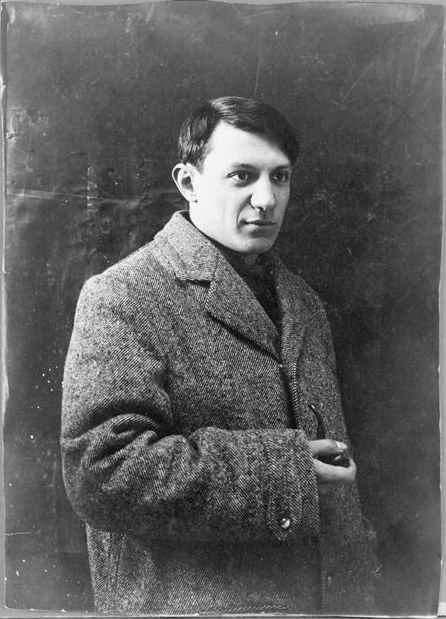Discover the career path of Pablo Picasso, from the first major opportunity to industry-changing achievements.
Pablo Picasso (1881-1973) was a Spanish painter, sculptor, and printmaker who spent much of his life in France. He is considered one of the most influential artists of the 20th century, best known for co-founding Cubism and for his diverse artistic styles. Picasso also invented constructed sculpture and co-invented collage. His iconic works include the proto-Cubist painting *Les Demoiselles d'Avignon* and *Guernica*, a powerful anti-war depiction of the bombing of Guernica during the Spanish Civil War. Picasso's impact on modern art remains significant.
1900: Modernist Period
Around 1900, Picasso entered his Modernist period, influenced by artists like Rossetti, Toulouse-Lautrec, and El Greco, leading to a personal version of modernism in his works.
March 1901: Publication of Arte Joven
In March 1901, Picasso and Francisco de Asís Soler published the first issue of the magazine Arte Joven in Madrid, featuring Picasso's illustrations.
1901: Start of the Blue Period
In 1901, Picasso's Blue Period began, characterized by sombre paintings in shades of blue and blue-green.
1901: Reminder of the 1899-1901 Period
In 1901, Picasso's work from this period is reminiscent of the generally upbeat and optimistic mood of paintings in the Rose Period (1904-1906).
1903: La Vie Painting
In 1903, Picasso painted La Vie, a gloomy allegorical painting, as a posthumous portrait of his friend Carles Casagemas.
1903: The Blindman's Meal and Celestina
In 1903, Picasso painted The Blindman's Meal and the portrait of Celestina, both reflecting the theme of blindness prevalent in his Blue Period works.
1904: Start of the Rose Period and Meeting Fernande Olivier
In 1904, Picasso began his Rose Period and met Fernande Olivier in Paris, who became his mistress and influenced his paintings.
1904: The Frugal Repast
In 1904, Picasso created The Frugal Repast, an etching depicting a blind man and a sighted woman at a bare table, reflecting the themes of blindness and poverty during his Blue Period.
1904: Rose Period Start
In 1904, Picasso entered the Rose Period, which featured a lighter tone with orange and pink colors, often depicting circus people and harlequins.
1904: End of the Blue Period
In 1904, Picasso's Blue Period ended, marking a transition to new artistic styles and themes.
1905: Patronage from the Steins and Meeting Henri Matisse
In 1905, Picasso became a favorite of American art collectors Leo and Gertrude Stein. He painted a portrait of Gertrude Stein. He met Henri Matisse at one of her gatherings.
1905: Transition into the "Rose Period"
In 1905, the reappearance of an acrobats theme in Picasso's work signaled the end of his "Blue Period" and marked the transition into his "Rose Period". This transition has been incorrectly attributed to the presence of Fernande Olivier in his life. This marked a change in his artistic style, moving away from the somber tones of his earlier work.
1906: Rose Period
In 1906, Picasso was in the Rose Period, characterized by a lighter tone utilizing orange and pink colours and featuring many circus people, acrobats and harlequins.
1906: Inspiration from Henri Matisse
In 1906, Picasso was motivated by Henri Matisse's Fauvist work, leading him to explore more radical styles and beginning a rivalry between the two artists.
June 1907: Inspiration from African Artifacts
In June 1907, Picasso was powerfully impressed by African artifacts at the ethnographic museum at Palais du Trocadéro, which influenced his painting Les Demoiselles d'Avignon.
1907: Start of the African-influenced Period
In 1907, Picasso began his African-influenced Period, showing the influence of African artifacts on his art.
1907: Les Demoiselles d'Avignon
In 1907, Picasso created Les Demoiselles d'Avignon, a proto-Cubist work that became one of his most famous pieces.
1907: Joins Daniel-Henry Kahnweiler's Art Gallery
In 1907, Picasso joined an art gallery in Paris opened by Daniel-Henry Kahnweiler, who became a premier art dealer and champion of Cubism.
1907: Nude with Raised Arms
In 1907, Picasso painted Nude with Raised Arms, during his African-influenced Period.
1908: Three Women Painting
In 1908, Picasso created Three Women, contributing to his African-influenced Period.
1909: Creation of Femme Assise
In 1909, Pablo Picasso created the painting 'Femme Assise', which would later sell for a record price at auction in June 2016.
1909: Beginning of Analytic Cubism
In 1909, Picasso began Analytic Cubism with Georges Braque, using monochrome colors to analyze objects in terms of their shapes.
1909: Analytic Cubism Development
In 1909, Picasso developed Analytic Cubism with Georges Braque, using monochrome colors to analyze objects in terms of their shapes.
1909: African-influenced Period
In 1909, Picasso was in the African-influenced Period, which began with his painting Les Demoiselles d'Avignon.
1912: Guitar Sculpture Construction
In 1912, Picasso created Guitar, a relief construction made of sheet metal and wire. It is considered a "three-dimensional planar counterpart of Cubist painting".
1912: Creation of Still Life with Chair Caning
In 1912, Picasso created Still Life with Chair Caning, marking the first cubist collage and assemblage during Synthetic Cubism.
1912: Analytic Cubism period end
In 1912, Picasso transitioned away from Analytic Cubism, marking the beginning of a new phase in his artistic style.
1915: Geometric and Minimalist Cubist Objects
Between 1915 and 1917, Picasso began a series of paintings depicting highly geometric and minimalist Cubist objects, consisting of either a pipe, a guitar or a glass.
1916: Exhibition of Les Demoiselles d'Avignon
In 1916, Picasso exhibited Les Demoiselles d'Avignon publicly for the first time, several years after its creation.
February 1917: First Trip to Italy and Neoclassical Style
In February 1917, Picasso made his first trip to Italy and began producing work in a neoclassical style following World War I, mirroring a "return to order" trend among European artists.
1917: Geometric and Minimalist Cubist Objects
Between 1915 and 1917, Picasso began a series of paintings depicting highly geometric and minimalist Cubist objects, consisting of either a pipe, a guitar or a glass.
1917: Paintings of Woman with a Mantilla, Figure in an Armchair, and Harlequin
In 1917, Picasso's paintings included the pointillist Woman with a Mantilla, the Cubist Figure in an Armchair, and the naturalistic Harlequin, showcasing his stylistic versatility.
1919: Drawings from Postcards and Photographs
In 1919, Picasso made a number of drawings from postcards and photographs, reflecting his interest in the stylistic conventions and static character of posed photographs.
1919: Synthetic Cubism
In 1919, Picasso was in the Synthetic cubism (1912–1919) period, in which cut paper fragments were pasted into compositions.
1920: Introduction to High Society and Collaboration on Pulcinella
In 1920, Khokhlova introduced Picasso to the life of the rich in Paris, including high society and formal dinner parties. During this year, Picasso also collaborated with Igor Stravinsky on Pulcinella, using the opportunity to make drawings of the composer.
1921: Neoclassical and Cubist Paintings
In 1921, Picasso simultaneously painted several large neoclassical paintings and two versions of the Cubist composition Three Musicians, demonstrating his ability to work in multiple styles.
1921: Summer in Fontainebleau and Painting Three Women at the Spring and Three Musicians
In the summer of 1921, Picasso, Khokhlova, and their son Paulo stayed in Fontainebleau, France. During this time, Picasso painted Three Women at the Spring and Three Musicians in a garage used as a studio.
1923: Picasso's Statement on Artistic Style
In an interview published in 1923, Picasso stated that the different manners he used in his art were not an evolution but rather a reflection of the subjects he wanted to express, adopting different ways of expression as needed.
1924: Friendship between Picasso and Christian Zervos
In 1924, Picasso and Christian Zervos became friends, which led to Zervos undertaking the compilation of the catalogue raisonné of Picasso's complete works from 1932 to 1978.
1925: Declared "One of Ours" by André Breton and Cubist Works at Surrealist Exhibition
In 1925, André Breton declared Picasso "one of ours" in his article. Les Demoiselles was reproduced in Europe for the first time, and Picasso exhibited Cubist works at the first Surrealist group exhibition, while developing new imagery to express himself emotionally.
1932: Zervos constitutes catalogue raisonné of Picasso's complete works
From 1932, Christian Zervos began compiling the catalogue raisonné of Picasso's complete works, with Picasso becoming a friend in 1924. The catalogue spanned until 1978, documenting Picasso's artistic output over several decades.
1932: Publication of the first volume of Picasso's catalogue raisonné
In 1932, the first volume of the catalogue raisonné of Picasso's work, 'Works from 1895 to 1906', was published by Christian Zervos. This endeavor led to Zervos' financial hardship, forcing him to sell art to avoid bankruptcy.
1935: Start of Poetry Writing
From 1935 to 1959, Picasso wrote more than 300 poems as an alternative outlet.
May 1936: Writing Poetry
Around this time, Picasso wrote poetry as an alternative outlet, with poems often titled with the date and location of their writing, such as "Paris 16 May 1936".
1936: Appointment as Director of the Prado
In 1936, at the start of the Spanish Civil War, Picasso was appointed as the "director of the Prado, albeit in absentia" by the Republicans. He took his duties seriously, providing funds to evacuate the museum's collection to Geneva.
July 1937: Exhibition of Guernica at the Paris International Exposition
In July 1937, Guernica was exhibited at the Spanish Pavilion at the Paris International Exposition and later became the centerpiece of a touring exhibition featuring works by Picasso, Matisse, Braque, and Henri Laurens.
1937: Picasso Paints Femme au Béret et à la Robe Quadrillée
In 1937, Pablo Picasso painted 'Femme au Béret et à la Robe Quadrillée', a portrait of Marie-Thérèse Walter, which was sold for £49.8m at Sotheby's in London in March 2018.
1937: Creation of 'The Dream and Lie of Franco'
In 1937, Picasso created 'The Dream and Lie of Franco' as an overtly political work expressing anger and condemnation of Francisco Franco and fascists, meant to be sold as postcards for fundraising for the Spanish Republican cause.
1937: Creation of Guernica
In 1937, Picasso created Guernica, a large narrative painting and one of his few works on such a scale.
1937: Guernica Painting
In 1937, Picasso created the anti-war painting Guernica, portraying the bombing of Guernica during the Spanish Civil War.
1939: Picasso Paints Femme assise, robe bleu
In 1939, Pablo Picasso painted 'Femme assise, robe bleu', a portrait that was later misappropriated during the early years of WWII and sold for $45 million at auction in May 2017.
1939: Retrospective at the Museum of Modern Art
In 1939, on the occasion of Picasso's retrospective at New York's Museum of Modern Art, Life magazine acknowledged his dominance in modern European art, with opinions divided on whether he was a corrupting influence or the greatest artist alive.
1942: Painting Still Life with Guitar
In 1942, Picasso continued to paint in his studio, producing works such as the Still Life with Guitar.
1944: Producing The Charnel House and Continuing Bronze Casting
In 1944, Picasso continued to paint in his studio, producing works such as The Charnel House (painted between 1944 and 1948). Although bronze casting was outlawed by the Germans in Paris, Picasso continued using bronze smuggled to him by the French Resistance.
1944: Joining the French Communist Party
In 1944, Picasso joined the French Communist Party. This decision aligned him with many continental intellectuals and artists of the time.
1945: Interview with Jerome Seckler
In 1945, Picasso stated in an interview with Jerome Seckler, "I am a Communist and my painting is Communist painting."
1948: Attendance at World Congress of Intellectuals
In 1948, Picasso attended the World Congress of Intellectuals in Defense of Peace in Poland. His attendance reflected his commitment to the communist ideology and his engagement in international political events.
January 1949: Creation of 'Dove'
On 9 January 1949, Picasso created 'Dove', a black and white lithograph that became an iconographic image known as 'The dove of peace'. It was used as a poster for the 1949 World Peace Council.
1949: Exhibition at the Philadelphia Museum of Art
In mid-1949, Picasso was one of 250 sculptors who exhibited in the 3rd Sculpture International held at the Philadelphia Museum of Art.
1953: Party Criticism for Stalin Portrait
In 1953, Picasso faced criticism from the Communist Party for his portrait of Joseph Stalin, which was deemed insufficiently realistic. Despite this, he remained a loyal member of the party.
1955: Helping Make Le Mystère Picasso
In 1955, Picasso helped make the film Le Mystère Picasso (The Mystery of Picasso), directed by Henri-Georges Clouzot.
1960: Cameo in Testament of Orpheus
In 1960, Picasso made a cameo appearance as himself in Jean Cocteau's Testament of Orpheus.
1967: Unveiling of the Chicago Picasso
In 1967, the Chicago Picasso, a large public sculpture, was unveiled in downtown Chicago. Picasso designed the ambiguous and somewhat controversial sculpture and donated it to the city, refusing payment.
1968: Torrent of Paintings and Etchings
From 1968 to 1971, Picasso produced a large volume of paintings and copperplate etchings, with his works becoming more daring, colourful, and expressive. These works were later seen as prefiguring Neo-Expressionism.
1970: Mila Gagarin supervised the publication of additional volumes of Picasso's catalogue raisonné
In 1970, following the death of Christian Zervos, Mila Gagarin took over the supervision of the publication of 11 additional volumes of Picasso's catalogue raisonné. She continued this work until 1978.
1971: Torrent of Paintings and Etchings
From 1968 to 1971, Picasso produced a large volume of paintings and copperplate etchings, with his works becoming more daring, colourful, and expressive. These works were later seen as prefiguring Neo-Expressionism.
1972: Catalogue raisonné complete work
By 1972, The 33 volumes cover the entire work from 1895 to 1972, with close to 16,000 black and white photographs, in accord with the will of the artist.
1973: Avignon Arts Festival
In the spring of 1973, Picasso helped put together 201 of his paintings for the Avignon Arts Festival, which opened at the Palais des Papes in May.
1978: Publication of the catalogue raisonné
In 1978, Mila Gagarin supervised the publication of 11 additional volumes of Picasso's catalogue raisonné, following the death of Christian Zervos. These volumes covered the period from 1970 to 1978.
1998: Hughes's Assessment of Picasso's Influence
In 1998, Robert Hughes stated that Pablo Picasso dominated Western art in the 20th century, achieving a level of fame unmatched by any painter or sculptor, including Michelangelo, during his lifetime.
2015: Top-Ranked Artist by Sales
As of 2015, Picasso remained the top-ranked artist based on sales of his works at auctions according to the Art Market Trends report.
June 2016: Femme Assise Sells for Record Price
In June 2016, Pablo Picasso's painting 'Femme Assise (1909)' was sold for £43.2 million ($63.4 million) at Sotheby's London. The sale exceeded the estimate by nearly $20 million and set a world record for the highest price ever paid at auction for a Cubist work.
May 2017: Sale of "Femme assise, robe bleu"
In May 2017, 'The Jerusalem Post' reported the sale of Picasso's 1939 portrait 'Femme assise, robe bleu' for $45 million at Christie's in New York City. The painting had been misappropriated during WWII and changed hands several times since its recovery.
March 2018: Femme au Béret et à la Robe Quadrillée Sold at Auction
In March 2018, Picasso's 'Femme au Béret et à la Robe Quadrillée (1937)', a portrait of Marie-Thérèse Walter, was sold for £49.8m at Sotheby's in London.
Mentioned in this timeline

Antonio Banderas born Jos Antonio Dom nguez Bandera is a...
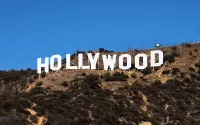
Los Angeles is the most populous city in California and...
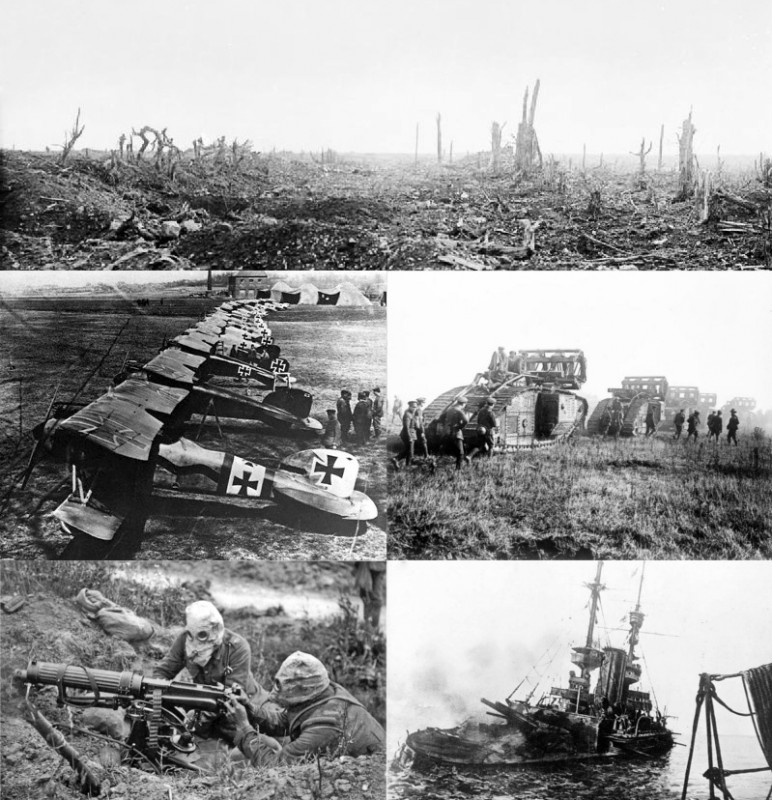
World War I a global conflict between the Allies and...
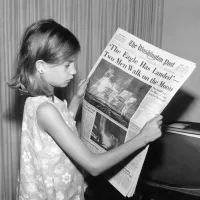
News encompasses information about current events disseminated through various media...

Seattle is the most populous city in Washington state and...
France officially the French Republic is a country primarily in...
Trending
39 minutes ago Microsoft Expands Data Centers, Investors See Buying Opportunity Despite Pullback

39 minutes ago Jay Kelly film starring George Clooney and Adam Sandler: Reviews and streaming details.
39 minutes ago Multiple Texas ISDs Earn CTE District of Distinction Awards for Excellence in Education
2 hours ago Australia Rejects Turkey's Climate Summit Co-Hosting Offer: Standoff Intensifies, Albanese Declares 'Not an Option'
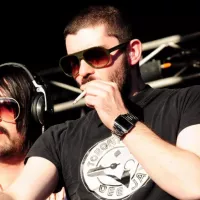
2 hours ago MicroStrategy purchased 8,178 Bitcoins amid price dip, Michael Saylor remains bullish.

2 hours ago George Strait Announces Lubbock Concerts: Tickets on Sale November 21st!
Popular

Chuck Schumer is the senior United States Senator from New...

XXXTentacion born Jahseh Dwayne Ricardo Onfroy was a controversial yet...

Bernie Sanders is a prominent American politician currently serving as...

Candace Owens is an American political commentator and author known...

Cristiano Ronaldo often nicknamed CR is a Portuguese professional footballer...
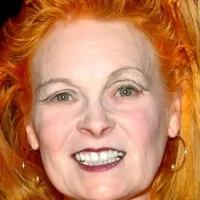
Vivienne Westwood was a highly influential English fashion designer and...
